For most of us, the Christmas break is a chance to recharge our batteries, refresh our ambitions for the New Year and revitalise our work ethic, but what about refurbishing your facility?
If your flooring needs some TLC then planning and preparation is key. Planning ahead means that you can repair or re-fit your facility’s floor in times of shut-down, to avoid additional down time which could affect production or cause costly catch-up situations down the line.
Identifying signs of floor failure before the flooring becomes dangerous to site staff or visitors is incredibly important. Not only will this mean that the flooring can be re-fitted before accidents occur, but it also reduces the risk of damage to the substrate, which would result in extremely expensive re-structuring.
What to look for
Industrial environments are very challenging spaces for flooring. Aside from regular footfall, industrial flooring needs to withstand conditions such as point loading and impacts from heavy machinery, large manufacturing equipment, moving production lines and storage containers.
With all of these challenges, the flooring can often be overlooked, but remembering to pay close inspection to your facility can highlight early signs of failure.
Poor Adhesion
Peeling, flaking or delamination of the top coating is a sure sign of poor inter-coat adhesion in resin flooring systems. Each of these exposes the base coat or substrate to dirt and dust inherent in many industrial facilities. This can become much more serious if corrosive substances reach the substrate, as this can affect the structural integrity of the building itself.
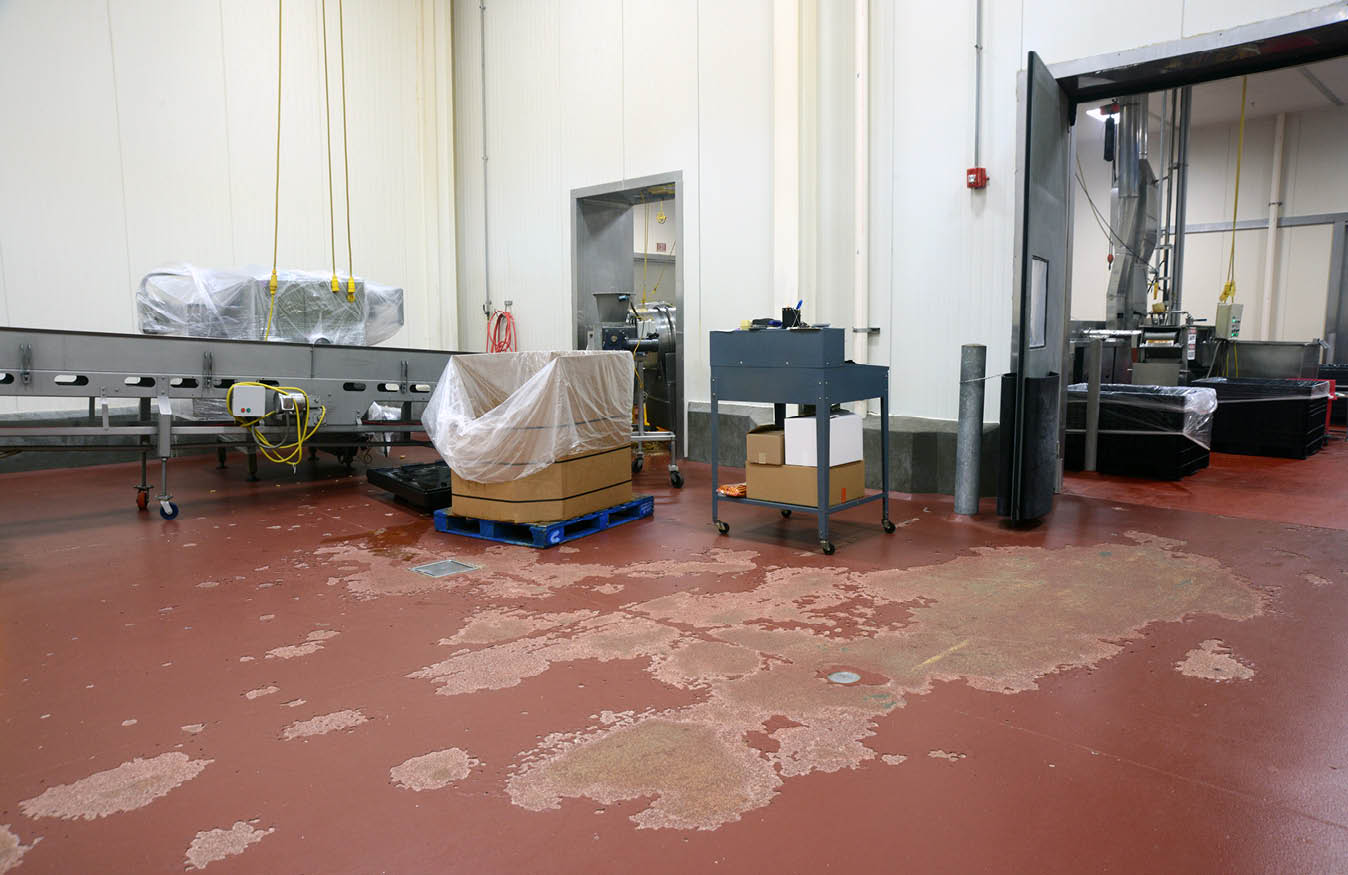
If floor failure is identified early, repairs can be carried out before the site becomes dangerous
Poor adhesion is often a result of improper preparation of the previous floor coating. To prevent this from happening all coatings should be applied by approved contractors, all contaminants must be removed from the previous layer, and the appropriate curing time must be adhered to before the subsequent coating is applied.
To correct this, sand blasting, sanding or grinding must be carried out to remove the failing layer, then the coatings must be reapplied one by one, allowing full time for each layer to cure. This can result in extended down time, which could cost your company a lot of money in lost business deals or late deliveries.
Surface Damage
Impact or wear related floor failure is extremely common in areas where there is regular exposure to forklift trucks, heavy machinery or staff carrying and potentially dropping tools, mechanical parts and other items. This type of daily wear and tear needs to be considered when flooring is specified.
Anticipated traffic loadings need to be particularly accounted for, as just a hand pallet truck when fully loaded could weigh in excess of one tonne. When repeatedly moved this will put intense pressure through the small wheels and into the floor, which could lead to abrasions of the floor coating.
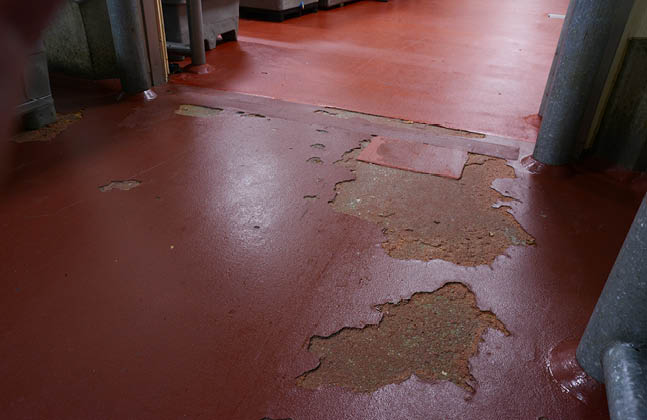
Areas of point loading or forklift trucks can lead to general wear and tear
Each of these factors could chip away at a floor finish, and even affect the substrate if the floor coating is thin and worn through. Specifying a thicker flooring system in areas where pallet trucks are used for example would help to reduce the risk of floor failure.
In a similar vein, exposure to extreme temperatures or chemicals can quickly lead to cracks or corrosion of the floor’s surface if the flooring is not adequate. Chemical and temperature resistance properties can be specified, as can moisture resistance, abrasion resistance and fire resistance; all of which can help to protect the flooring.
Visual Imperfections
While visual imperfections may not affect the floor’s functionality or durability, they can significantly diminish the floor’s appearance. This becomes important in food and beverage facilities, such as distilleries, wineries or breweries that welcome visitors on a daily basis for site tours and tastings. In sites such as this, the visual appearance of the facility is just as important as the functionality, and unsightly air bubbles or ‘fish eyes’ can hinder the customer experience.
Air bubbles can appear in the floor finish as small, dark pinheads that can occur if the resin coating is improperly mixed, if the temperature is too high during application, or if air movement is present from fans or drafts from open doors leading to rapid drying before trapped air has time to escape. In a similar vein, if the application is in direct sunlight, the floor can become tacky before enough air has been released during curing.
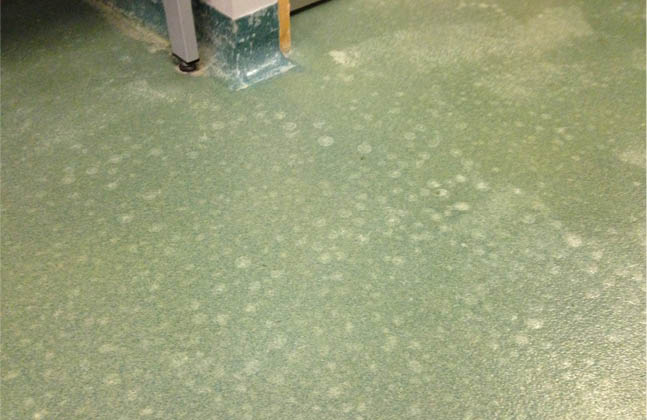
Visual imperfections such as air bubbles or fish eyes can suggest problems beneath the surface
An absorbent substrate or one that releases an excessive amount of moisture can also cause a variety of issues, including bubbles. To avoid this, the substrate should be properly dried prior to applying the coating.
Fish eyes on the other hand appear as round separations or indentations in the floor finish, creating a crater effect. These most often occur when there is a difference in surface tension between the coating and the substrate, most often due to the presence of contaminants on the substrate. Fish eyes can also occur if the epoxy coating is applied on top of a tacky primer that has not properly cured.
Prevent this through proper preparation of the substrate by sufficient sanding and thorough removal of any contaminants. To repair these, the area must be sanded, cleaned and the coating must be reapplied carefully, whilst being inspected for fish eyes at every stage of the application.
Replacement
Although replacing flooring can seem like a huge expense, underlining the challenges that the flooring will face during specification is key to getting the correct system that will stand the test of time.
For example, there are extremely durable, hardwearing resin systems that are abrasion resistant, chemical resistant and have incorporated antibacterial additives. For wet production areas or spaces where there is a high chance of water, slip resistance can be specified, as well as an impervious coating and adequate drainage.
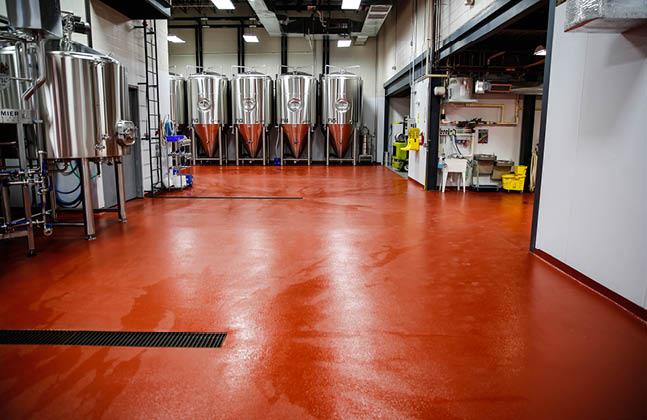
Durable, slip resistant and antibacterial resin flooring solutions can be specified to keep your facility safe
There are even temperature resistant systems that are designed to tolerate extremely low or high temperatures depending on where they will be installed. Flooring systems like these can be applied in cold storage areas, or in facilities with industrial ovens or where steam cleaning is a priority.
Will your New Year Resolution be to repair or replace your worn or damaged flooring? If you need any further information on the ideal flooring solutions for your facility, please feel free to comment below or give us a call.
2 thoughts on “New Year, New Flooring for Your Facility?”
Comments are closed.

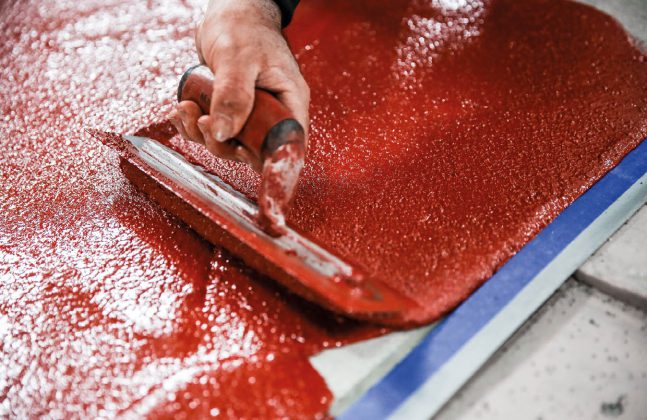




what can i use on the forecourt at petrol stations for the coloured parking bays at the pump
Hi John
Thanks for your comment. It would depend a lot on the exact amount of traffic, type of vehicles and amount of exposure to chemicals that your were anticipating. If you’d like to use a resin system then a PU deck coating like Deckshield could be a good fit, as this has been specifically designed for areas of high vehicular traffic. If you let us know where you are based we can get a local expert to get in touch and discuss your exact needs if you like?
Thanks,
Dan